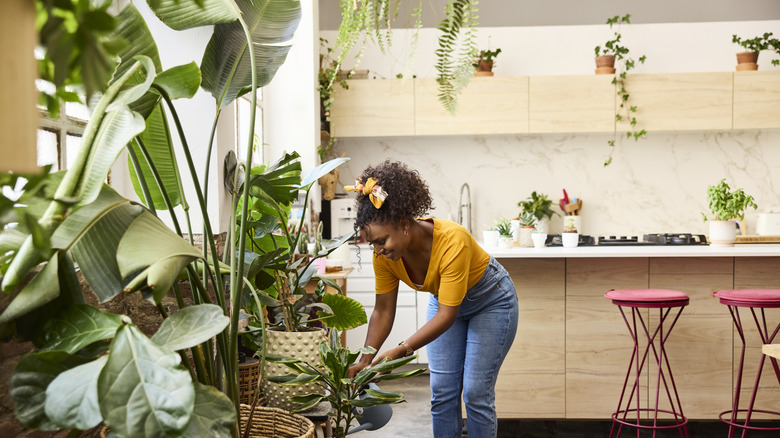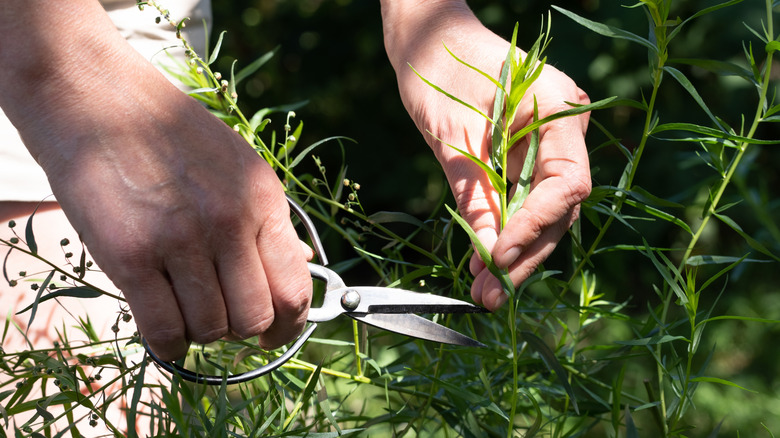The Popular French Herb You Can Grow Indoors For Year-Round Flavor
Imagine cooking your favorite meal and swapping store-bought, dried herbs for some that you grew yourself, right in your home. This dream can easily become your reality with the right steps as you cultivate a thriving herb garden indoors, and this easy-to-grow herb can be the perfect place to start.
The herb in question is tarragon, and there are several types to choose from. Some common varieties are Russian tarragon (Artemisia dracunculus) and Mexican tarragon (Tagetes lucida), but French tarragon (Artemisia dracunculus 'Sativa') is well known for its flavor. Reminiscent of anise, tarragon's flavor has earned it the starring role in many notable dishes from pasta to seafood. Thanks to its versatility and the strong scent of its dried leaves, you may find yourself interested in adding this herb to your garden. The best part is, you can also grow tarragon indoors, where you can access it year-round and keep it sheltered from colder weather.
How to grow tarragon indoors
When starting your French tarragon indoors, first, make sure that you have the right variety. While other varieties of tarragon can still be used in cooking, they may need different care than the 'Sativa' variety. One way to tell the differences is that French tarragon cannot be started from seed. To get started, you'll need to source an established tarragon plant, such as from a nursery, or propagate your tarragon from cuttings.
When growing tarragon indoors, you want to ensure it has ample sunlight. This aromatic herb grows best with full sun, so you'll want to set your pot in a south-facing window for optimal indoor light exposure indoors. For those located in the Southern Hemisphere, opt for a north-facing window instead for the same effects. Having the right soil for your tarragon is also essential. Aim for soil with a neutral pH, ranging from 6.5 to 7.5. Another key step in cultivating healthy tarragon indoors is to provide frequent, deep waterings without leaving the soil soggy or waterlogged — especially because it can be susceptible to mildew — and pruning regularly. Of course, pruning regularly shouldn't be difficult with how easily you can incorporate this herb into a variety of dishes.
Part of the fun of growing tarragon indoors is being able to readily harvest it as needed. To harvest your tarragon, start with the lower leaves on the stem, stripping them first before stripping those from the top. You can also harvest the flowers, although they aren't often used in cooking. Instead you can use the flowers to create tea.

